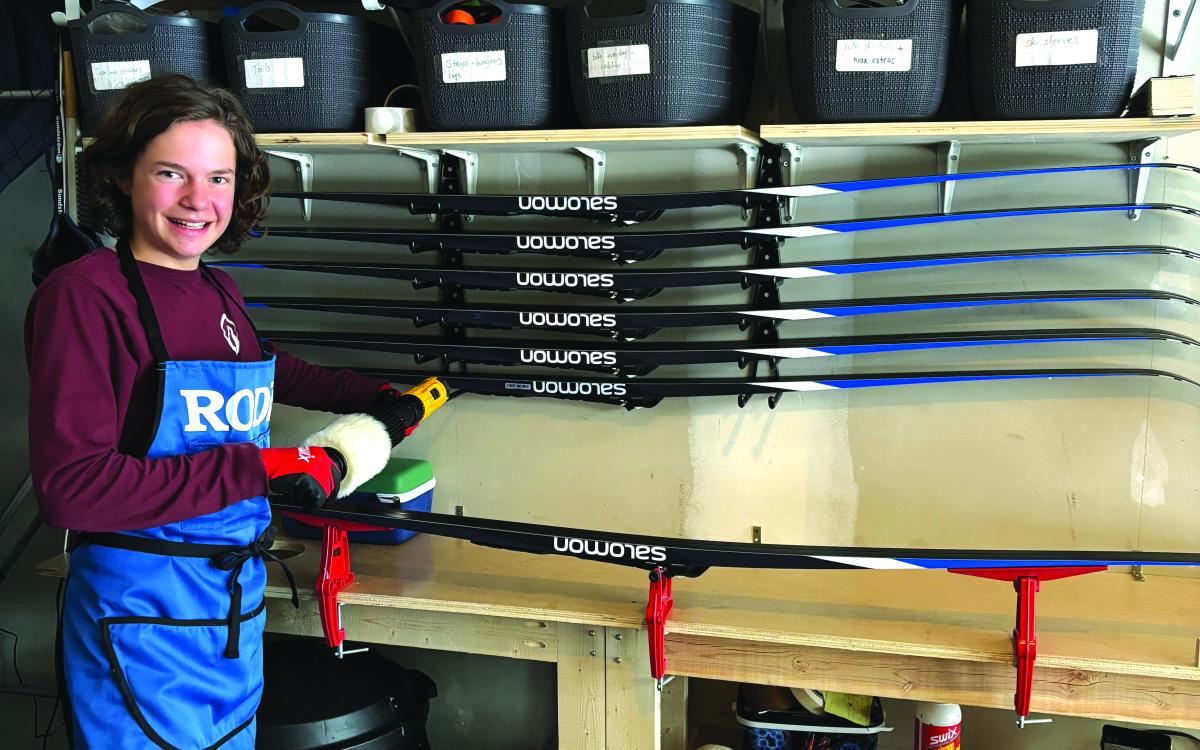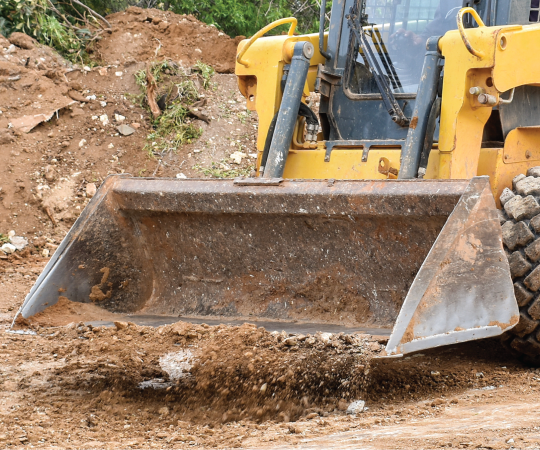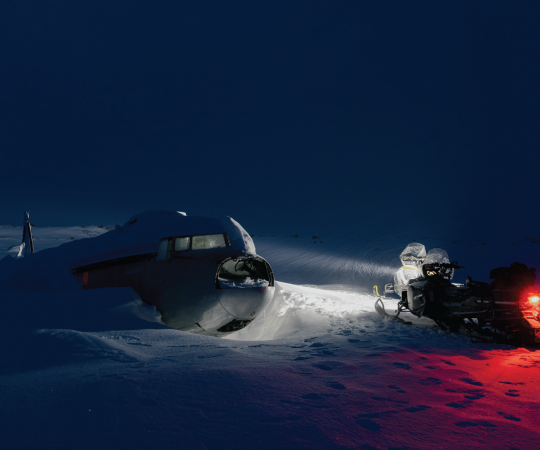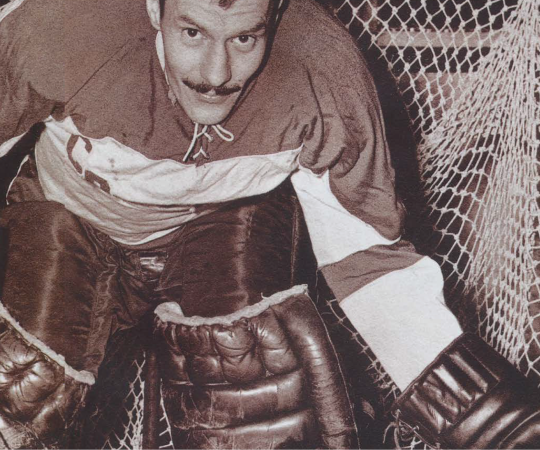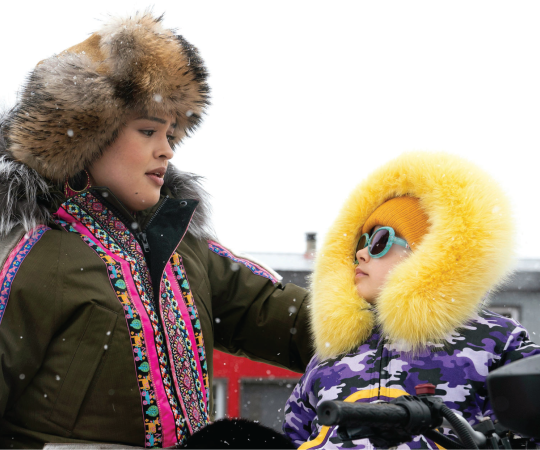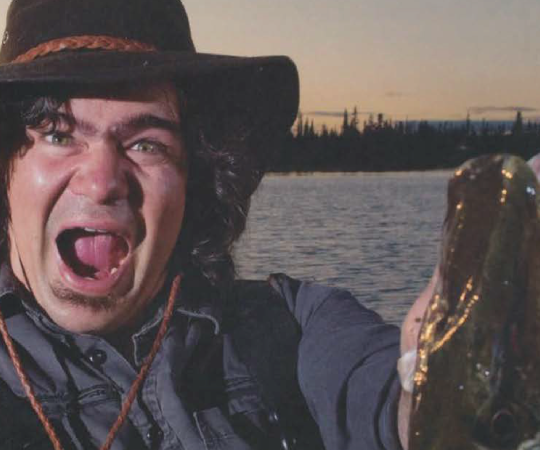Sitka Land-Gillis walks into the chalet after a two-hour ski practice, fluorescent-pink sunglasses pushed up on his toque. It’s a Monday night in January and he’s biked to the Whitehorse Nordic Centre to work on his cross-country technique with Team Yukon in the dying daylight. He’ll bike home in the dark. This is a six-days-a-week routine. Now, though, he has more free time—the 14-year-old just finished Machine Learning Algorithms, an online Stanford University coding course. It was his second one but he’s now too busy teaching machines to sign up for a third.
Land-Gillis is developing an algorithm he hopes Team Canada will use in Italy at the 2026 Olympics. The program determines the best ski wax to use in different conditions. He first had the idea after taking Wax It to Win It, his school project on ski waxes, to Ottawa for the National Science Fair in 2024.
Sitting in the noisy chalet, surrounded by kids getting ready for lessons under floodlights, Land-Gillis admits his original methodology was pretty analog—simply skiing with various waxes and recording on paper which ones performed best. But after the science fair, he started thinking about what it might be like if he could just pick up his phone and ask, “Hey, Siri, what’s the best wax to use today?” No app like that existed, so he decided to build it. The only problem was, as Land-Gillis admits with a shy laugh, “I’d never coded.”
Ski waxes are rated according to basic metrics, such as air temperature, but their performance also depends on snow temperature, relative humidity, the grain size of each snowflake on the ground, track hardness and more.
Before a race, professional teams send techs out to frantically try a handful of waxes in search of the optimal glide for that hour of the day. But in a sport where milliseconds mark the difference between medals, this is a crude approach. Refining it has taken Land-Gillis some time and a lot of wax.
He picks the six waxes he thinks will work best that day, then runs them through the same scenario, eliminating poor performers in a round-robin-style tournament. Two subjects—Land-Gillis and his mom—stand at the top of a hill on identical skis with different waxes. They take off in tandem, holding a ski pole between them, and wait until their ski tips are aligned and they’re moving at the same speed before dropping the pole and gliding to see who makes it further.
After that, they swap skis and run the test again, calculating the net difference in distance between both runs to eliminate variables like weight, aerodynamics and the possibility one of them had a faster surface. Land-Gillis then records the air and snow temperature during the run. He uses a magnifying loupe to gauge grain size of the snow, checks track hardness and consistency and accounts for minor manufacturing differences in six identical sets of Salomon skis.
Land-Gillis is currently building the algorithm around 10 completed tests and aims to take it to the National Science Fair in May. This is a relatively cushy timeline, all things considered. His high school gave him credit for the university courses he took, so he has a spare in his ninth-grade timetable, which means six hours each week to fill with the project.
In the chalet, he lays the results of one trial on a table. His blocky pencil printing shows the date, Dec. 23, and the conditions. He’ll feed the conditions and outcomes of a number of these tests to the algorithm to build its predictive value. Later, he’ll input information from subsequent tests to see if his formula predicts the winning waxes.
Eventually, Land-Gillis is interested in developing a phone-based app for recreational skiers, but it’s not his primary focus. This spring, he’s working with Own the Podium, which aims to get medals on Canadian Olympic and Paralympic athletes, to figure out how best to package the algorithm as a tool for Team Canada.
The chalet is quiet now, all the ski kids outside in their lessons, so it’s easier to hear the confidence in his quiet voice. He’ll do further tests on Yukon trails by giving it to the local ski club he’s part of, but he’s already moved on in his mind—from the nordic centre in Whitehorse to the Tesero Cross-Country Skiing Stadium in Italy.

